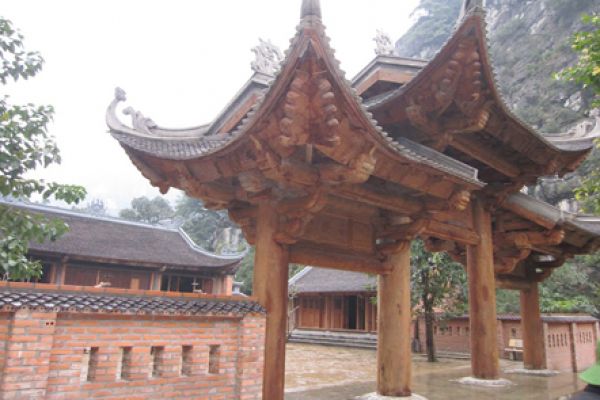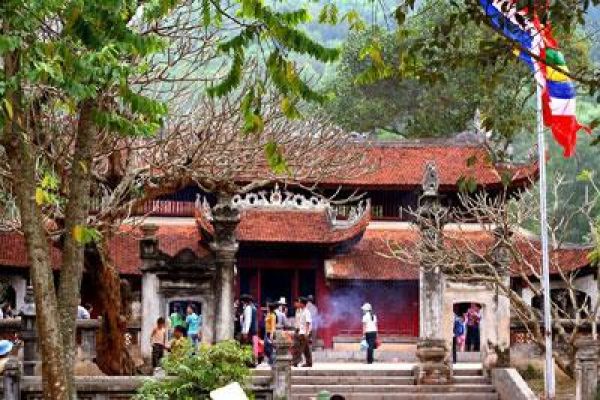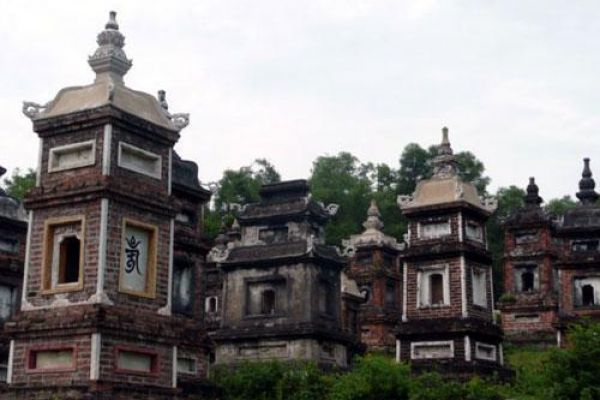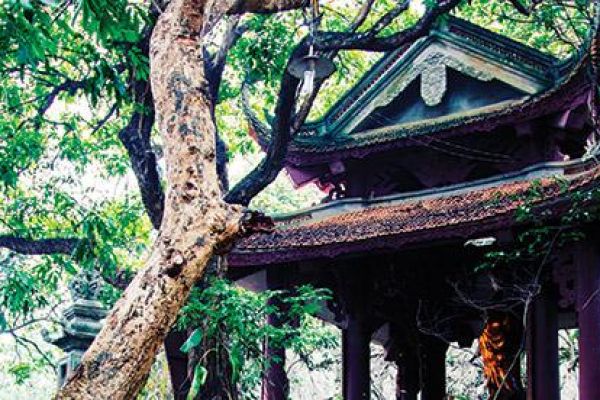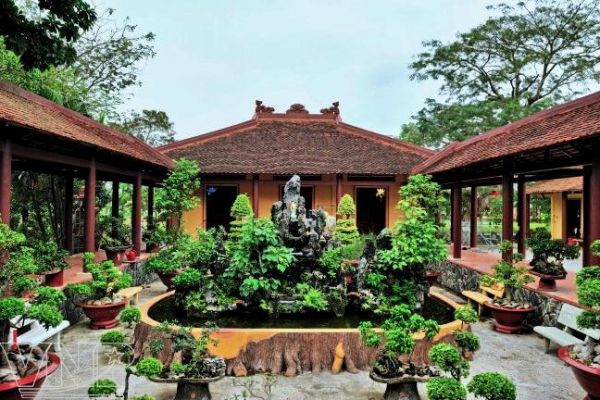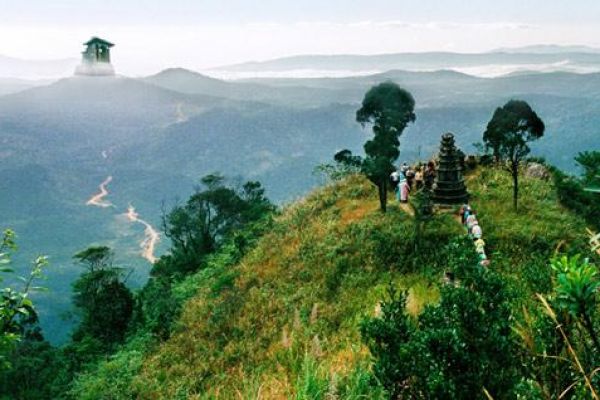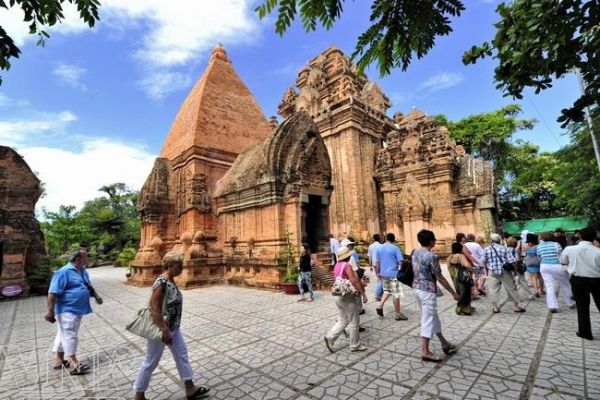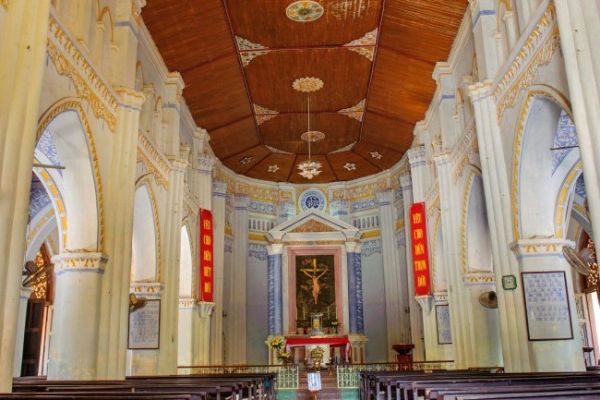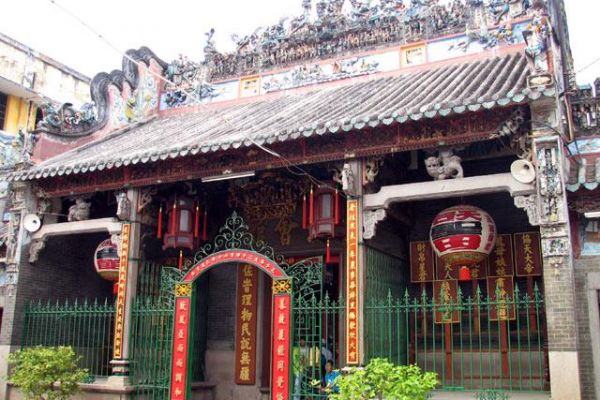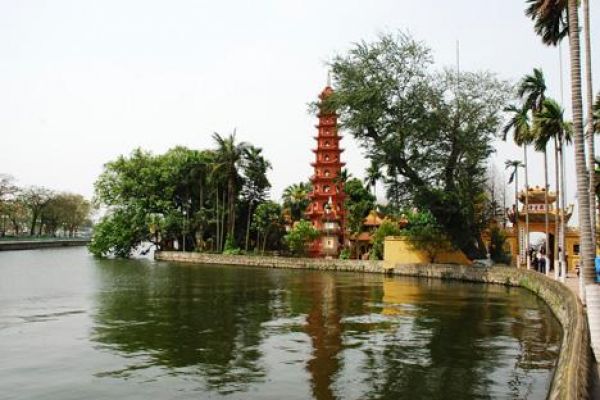Summer may be the best season to visit Thay Pagoda in Hanoi. It's the time to admire the flamboyantly red flowers on the large gao trees in front of the 900-year-old building brighten up the blue sky.
The poetic beauty of the pagoda has inspired many of Vietnam's painters and writers. The best-known images of the pagoda are closely related to those flowers. Readers may be interested to know that the gao is often planted outside village gates because of the propitious colour of its flowers.
The soft white down in the heart of the huge flowers is often used by villagers to make superb pillows. And juice from the thorn-covered bark can be used as a type of antibiotic on open cuts and small wounds.Returning to the beautiful Buddhist monument on a recent hot day, my eyes were refreshed by those resplendent flowers, which are closely attached to my childhood in the countryside. While the pagoda is well-known locally, it's not so popular with foreign tourists and expats. But it truly is a sight worth seeing, especially this time of the year!
The pagoda is situated at the foot of Sai Son Mountain in Phuong Cach Commune, Quoc Oai District in old Ha Tay Province, now part of Hanoi, about 30km southwest of the heart of the capital city. The pagoda was built in the 11th century during the reign of King Ly Nhan Tong. The abbot was Tu Dao Hanh who was well-known for his humility and generosity towards the poor.
Legend has it that Hanh invented water puppetry to mark the lives of the rural population. Since then, the art from the area has become popular nationwide. During the pagoda's festival (the third lunar month), performances are held in the middle of the Long Tri pond located in front of the pagoda.
Thầy Pagoda consists of three buildings parallel to each other: Hà Pagoda, Trung Pagoda, and Thượng Pagoda. The outer one, Hà Pagoda, is the place for offerings and ceremonies; the middle one, Trung Pagoda, is for worship of the Buddha; and the inner and highest is set aside to worship Từ Đạo Hạnh. In Trung Pagoda, there is a sandalwood statue of Tu Dao Hanh sitting on a red lacquered shrine trimmed with gold and covered with a curtain. To explore this section, it's necessary to climb up nearly 100 stone steps. The tranquility of the pagoda is a delight for all visitors all year round, but local guide Tran Phuong Nga says during the present lunar March, it can welcome up to 80,000.
"Many Vietnamese believe the pagoda is a sacred site. This makes it one of the most visited in the north," said Nga.
Ceremonies connected with the Thay Pagoda Festival consist of bathing Tu Dao Hanh's statue, burning incense and escorting sacred objects around the temple in procession. There are also the cheo (popular theatre) plays, chess games - and, of course, the water puppet shows. Nga said Hanh died sitting in meditation without food and drink for months. His dried body became an object for veneration until the Ming invaders who ruled Vietnam from 1407 to 1427 took it further up the mount and burned it.
The locals collected his ashes, mixed them with earth and made a statue for worship. From then on, the mount was called the Burning Mount.
In the past, during the festival, local young men and girls used to meet and declare love to each other in Cac Co cave inside the pagoda. Locals still believe that if a single girl or boy enters the cave, he or she can quickly find a soulmate. There is even a well known Vietnamese folk song that goes: "Single girls long for Cac Co cave; single boys miss Thay pagoda's festival". However, it is very difficult to enter the cave. It can only be attempted on a dry day, because access is via steep rocks that become treacherous after rain.
The cave holds an astonishing secret. It holds 3,600 skeletons of Vietnamese soldiers who were walled in when fighting against Chinese invaders. It is deep and dark. We hired a flashlight and stepped carefully. After climbing several staircases, we saw a huge stone enclosure full of skeletons. An altar was being installed in front of it. To get to the famous pagoda,take the bus from Giap Bat station. Or, by road, follow the Thang Long Highway heading out to Hoa Lac (from the centre of Hanoi). The turn off to the pagoda is on the right-hand side close to Quoc Oai District about 20km out of town.
Vietnamnews

